I am trying to tune/tweak/repair this transmitter for a friend of mine. It is oscillating, and it has rf power on the antenna, but it just doesn't seem as "strong" as it should be.
The diagram says 35-40 watt carrier. Now its a class A final amp, so I should be expecting half (or less) of that carrier wattage, correct? It came to me with a VFO, Hartley oscillator which was very unstable, so I replaced it with a Colpitts crystal for testing purposes. (I changed the diagram as well.) The only other thing I have added is a 40uH RF choke in the plate supply line to the 807s. I could not get a clean carrier without this choke.
As far as I can tell, everything is working. It oscillates, has RF at the buffer EL84 stage, and has RF at the 807s.
I tune for the "dip" in 807 plate current, which then has the highest RF on my diy field strength meter, and here are the 807 measurements: Plate voltage: 500-525v Plate current: 90mA No signal Screen voltage: 115v No signal <-- this seems low to me. Grid voltage: -14.7v No signal <-- also seems low. (not negative enough)
The antenna is a 1 wave long wire. 25AWG magnet wire, about 10ft off the ground, no counterpoise. RF ground is a foundation stake pounded into the earth about 4 ft. (and it's raining here. ground is wet.) I was using an antenna matching large variable inductor with multiple taps and fine tuning, but it seems to be "robbing" RF. It has a large neon bulb that glows brightly when it's hooked up though.
Is there anything fundamentally wrong with this circuit? Any red flags looking at the schematic? Lack of RF chokes? RF feeding back into the power transformer? Does the EL84 oscillator buffer need a tank circuit on the plate to tune to resonance?
Any help would be appreciated! Thanks.
 Here's a link to the 807 class A specs I've been using:
Here's a link to the 807 class A specs I've been using:
Dwayne Reid: Thanks for your help. When I pull the audio EL84, the 807 plate current shoots up to 160mA, screen voltage increases to 204v, grid voltage stays the same, -14ish. The field strength of the antenna increases as well.
